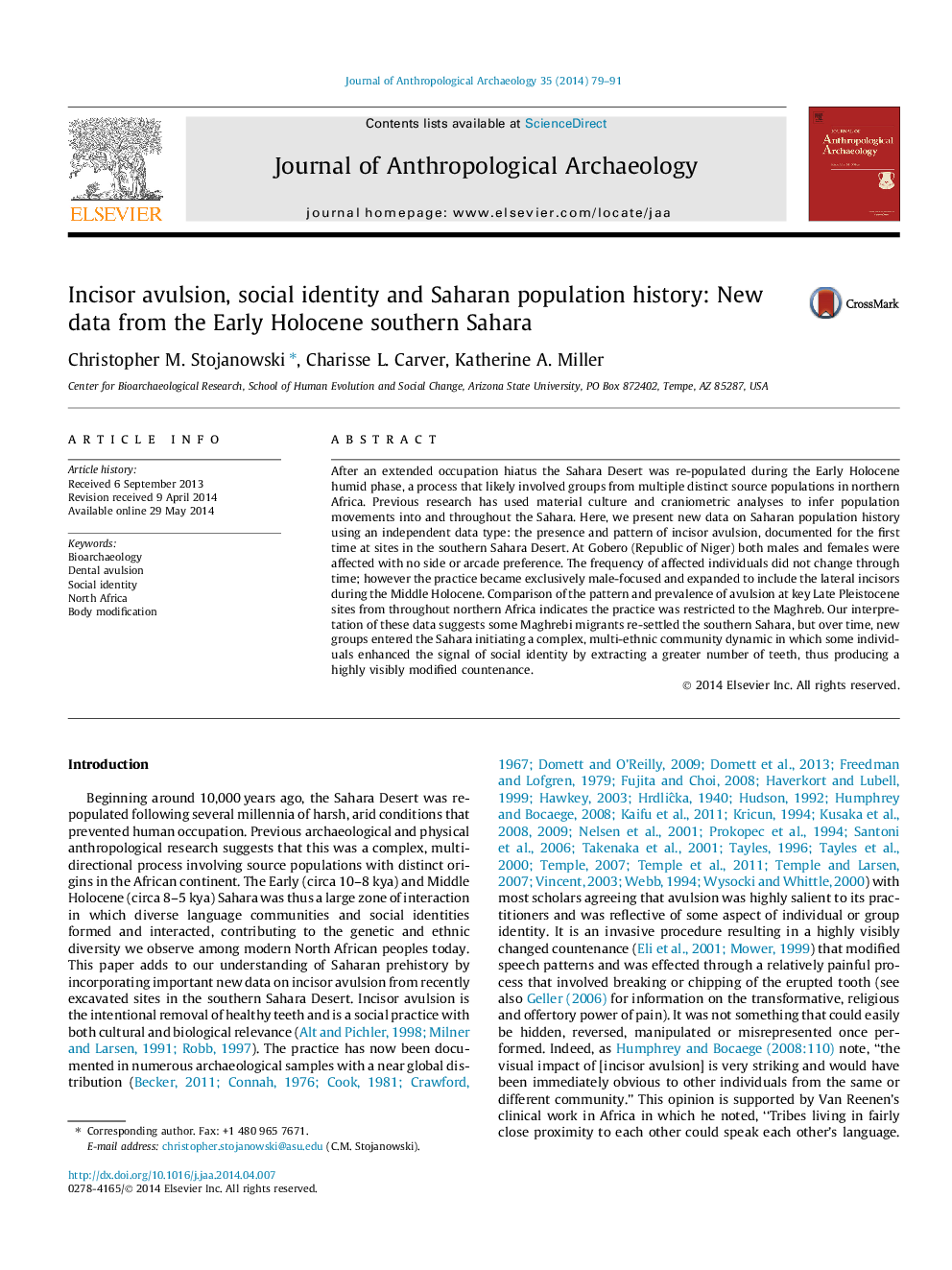| کد مقاله | کد نشریه | سال انتشار | مقاله انگلیسی | نسخه تمام متن |
|---|---|---|---|---|
| 1034957 | 1483855 | 2014 | 13 صفحه PDF | دانلود رایگان |
After an extended occupation hiatus the Sahara Desert was re-populated during the Early Holocene humid phase, a process that likely involved groups from multiple distinct source populations in northern Africa. Previous research has used material culture and craniometric analyses to infer population movements into and throughout the Sahara. Here, we present new data on Saharan population history using an independent data type: the presence and pattern of incisor avulsion, documented for the first time at sites in the southern Sahara Desert. At Gobero (Republic of Niger) both males and females were affected with no side or arcade preference. The frequency of affected individuals did not change through time; however the practice became exclusively male-focused and expanded to include the lateral incisors during the Middle Holocene. Comparison of the pattern and prevalence of avulsion at key Late Pleistocene sites from throughout northern Africa indicates the practice was restricted to the Maghreb. Our interpretation of these data suggests some Maghrebi migrants re-settled the southern Sahara, but over time, new groups entered the Sahara initiating a complex, multi-ethnic community dynamic in which some individuals enhanced the signal of social identity by extracting a greater number of teeth, thus producing a highly visibly modified countenance.
Journal: Journal of Anthropological Archaeology - Volume 35, September 2014, Pages 79–91
